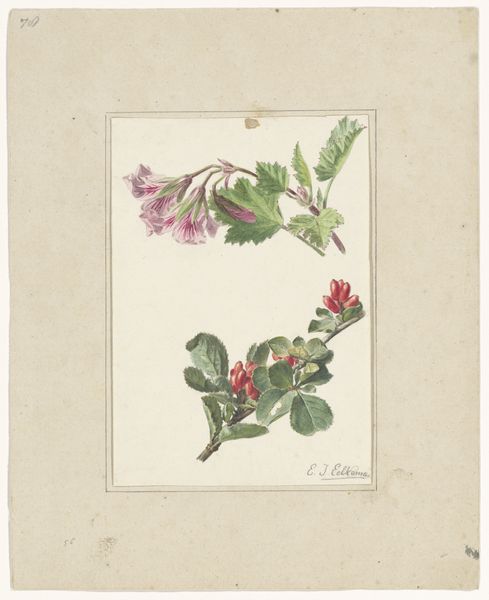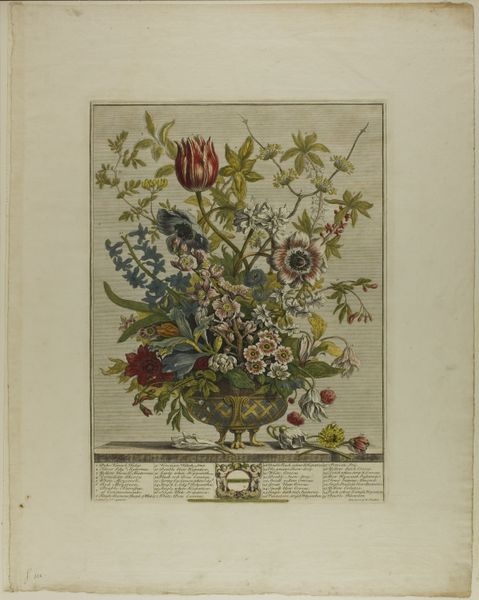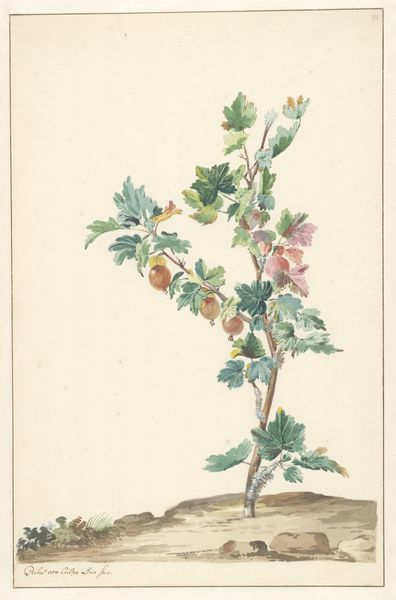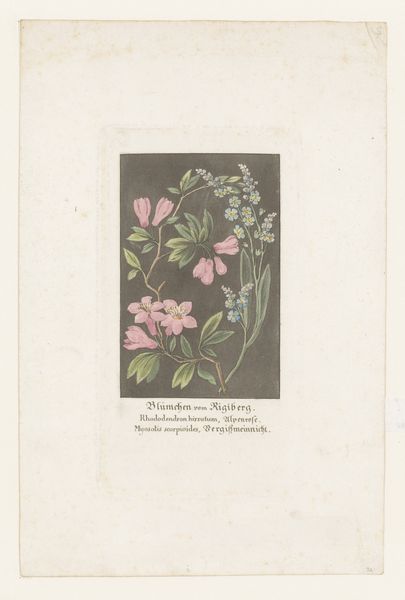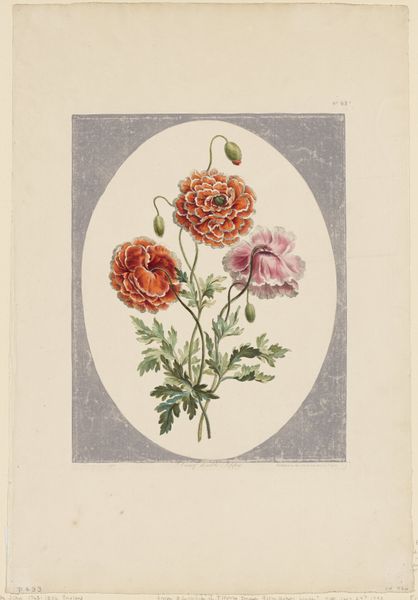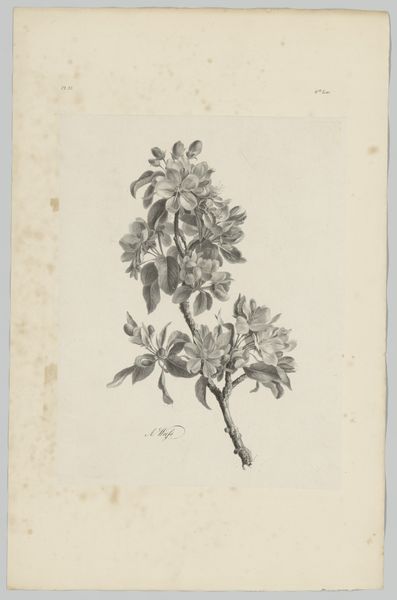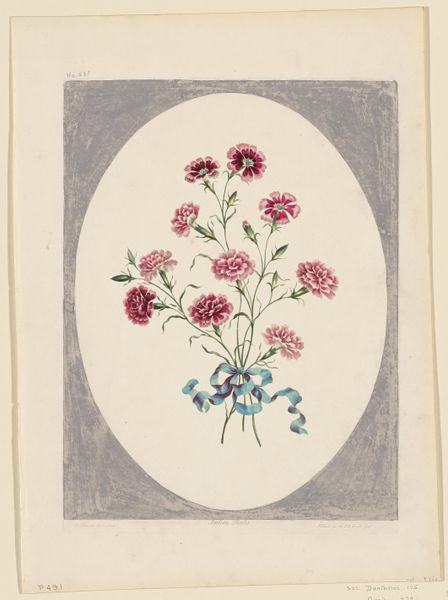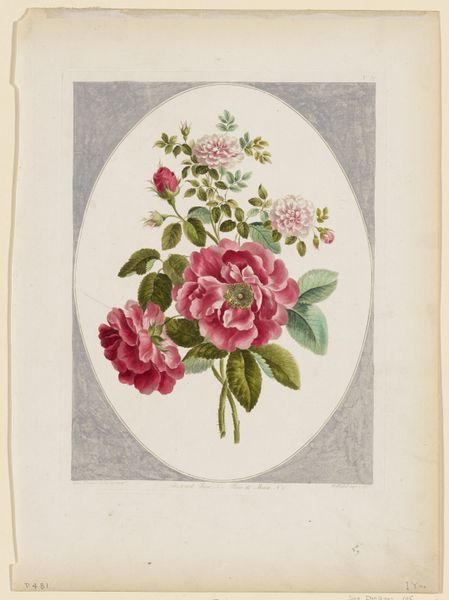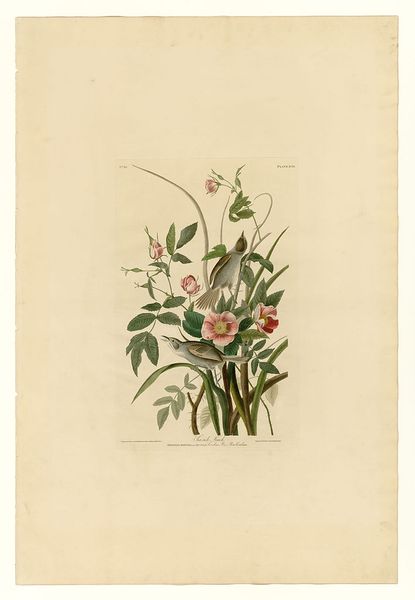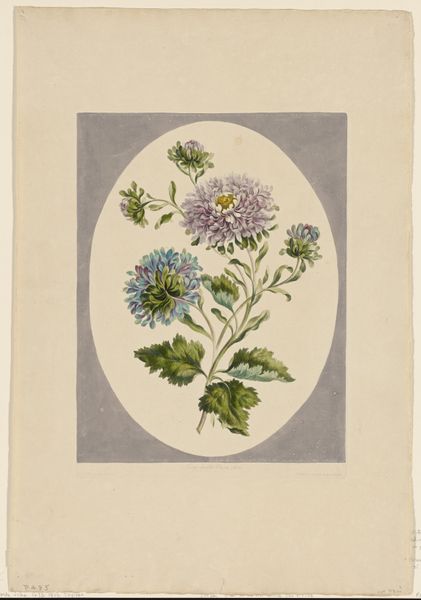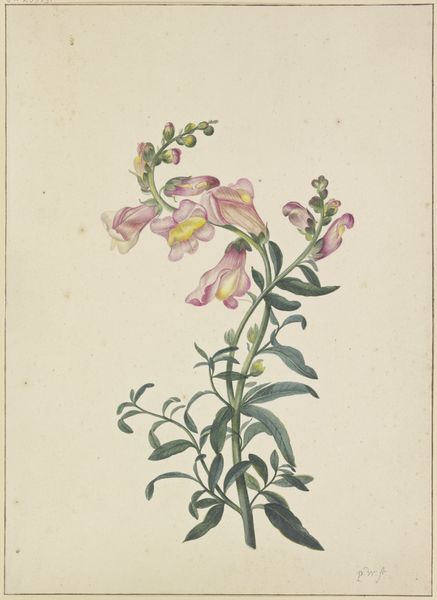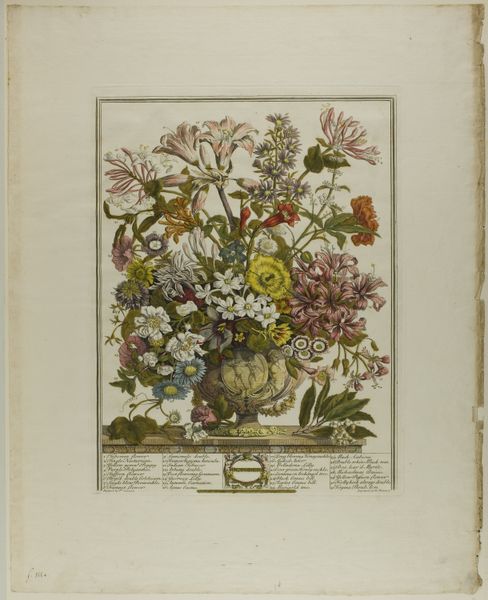
drawing, print, paper, watercolor
#
drawing
#
water colours
# print
#
paper
#
watercolor
#
academic-art
#
naturalism
#
watercolor
Dimensions: 13 1/4 x 9 3/4 in. (33.66 x 24.77 cm) (plate)
Copyright: Public Domain
Curator: The Minneapolis Institute of Art holds this rather enchanting floral print. It's titled "Flower Print No. 32" by John Edwards, dating from 1784 to 1788. It seems to be rendered with watercolor on paper. Editor: It gives the impression of being contained, somehow—delicate, yes, but with this rather severe oval framing and a reserved palette. It’s quite a curious arrangement; something both appealing and slightly melancholic in its presentation. Curator: Melancholy may stem from an understanding of the context. Consider the era: botanical illustration flourished alongside increasing colonial exploitation of global resources. Flowers, especially exotic ones, become symbols of wealth and imperial ambition, stripped from their origins and recontextualized as trophies. Editor: A strong reading! But one could also read it as a study in contrasts, structurally speaking. The delicate blooms versus the bristly, thorny stems, the vibrant, saturated ribbon at the bottom. The artist really commands attention to the specific juxtaposition between these things. Curator: Precisely, and look how the very act of tying the ribbon around the stems almost suggests a binding, a forced constraint—a visual echo of colonial power dynamics, perhaps even a critique of the practice of categorizing and displaying nature like a possession. Editor: I find the rendering to be interesting, a sort of controlled abandon. The coloring is both precise and muted, with very little variation across the different surfaces. Even the leaves have an almost metallic quality, giving the overall scene a slightly detached feel. Almost clinical. Curator: Absolutely, there's a tension between scientific observation and aesthetic representation here. The artist attempts to capture the true form, but through the lens of a social system eager to claim and contain nature's bounty. It encourages reflection on humanity's relationship with nature during a period of significant global upheaval and botanical obsession. Editor: I'm persuaded! It's true that beneath its lovely exterior lies much for us to explore regarding both artistic composition, and its possible embedded socio-historic meanings. Curator: Indeed, seeing beyond simple representation to discover layers of interpretation. It invites questions regarding colonial influence, class and displays of wealth.
Comments
No comments
Be the first to comment and join the conversation on the ultimate creative platform.
